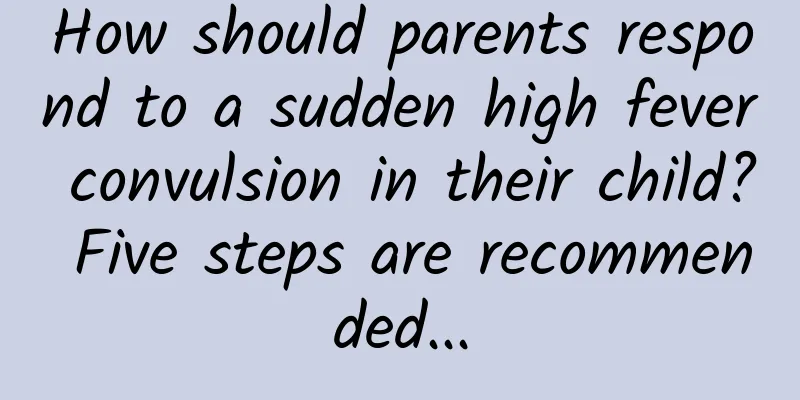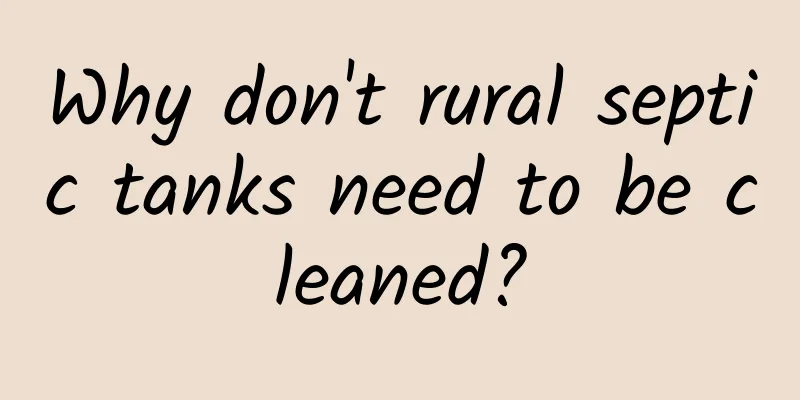How should parents respond to a sudden high fever convulsion in their child? Five steps are recommended...

|
The Spring Festival has passed, but the temperature is still low and influenza is still prevalent. Recently, the pediatric outpatient clinic of Hunan Guangxiu Hospital has received many children with fever. If a child suddenly develops a high fever, he or she may experience symptoms such as eyes rolling up, teeth clenching, whole body convulsions, and even loss of consciousness. This is medically called "febrile convulsions in children." Once the above situation occurs, many parents may not know how to deal with it promptly and correctly. This issue of Guangxiu Nursing Class will help you deal with it scientifically. 1. What is “febrile convulsion”?Febrile convulsion, commonly known as "convulsion", refers to a sudden rise in body temperature that causes movement of the cerebral cortex and a large number of abnormal discharges of nerve cells, resulting in temporary involuntary contraction of the whole body or local muscles, accompanied by impaired consciousness (excluding intracranial infection and other organic or metabolic diseases that cause convulsions). In children with high fever convulsions, the body temperature is usually above 38.5℃-39℃, and the age of onset is mostly between 3 months and 6 years old. 2. High fever convulsion has these clinical manifestations1. Appearing in the early stage of fever (rectal temperature ≥ 38.5℃, axillary temperature ≥ 38.0℃, within 6-12 hours after the onset of fever, and no later than 24 hours); 2. Loss of consciousness or falling, with brief involuntary twitching of the limbs, trunk, and facial skeletal muscles; 3. Irregular or paused breathing, accompanied by cyanosis of the lips; 4. The eyes are fixed or turned upward, staring, or squinting, and the head is tilted back or turned to one side; 5. Foaming at the mouth, clenched jaws, muscle rigidity, and incontinence; 6. Duration of convulsion: It will be relieved within seconds or minutes, and most of them will not exceed 15 minutes. Consciousness will be restored quickly after the convulsion, and there will be no abnormality of the central nervous system. 3. Please remember the emergency treatment methodsStep 1: Place the child on his side, tilt his head to one side, unbutton his collar, and loosen his belt; Step 2: Clear respiratory secretions or vomitus to prevent choking into the trachea and causing suffocation. Do not feed water, medicine or food to the child at this time; Step 3: Wrap a tongue depressor or chopsticks with soft cloth and place it between the upper and lower molars of the child to prevent the tongue from being bitten. Remember not to put your fingers directly into the child's mouth to avoid biting; Step 4: Cool down (use appropriate physical cooling according to the season). Specific methods are: 1. Cold compress: Place a cold towel on the child's forehead, armpits, and groin, and change the positions alternately; fill a hot water bottle with ice water or use an ice pack, wrap it with a towel and place it on the child's forehead, neck, or groin, or use a cooling patch. 2. Warm water bath: Use a warm water towel to gently wipe the neck, armpits, elbows, groin, etc. repeatedly to promote blood circulation in the body and facilitate heat dissipation. 3. Rectal antipyretic suppository. Step 5: While taking emergency measures, you should also rush to get the child to the hospital as soon as possible. Do not wrap the child tightly during the trip to the hospital, as this will make it difficult to observe the condition and may cause the child to suffocate. The Pediatric Department of Hunan Guangxiu Hospital reminds you that during emergency treatment and medical treatment, do not pinch the child's philtrum or press hard on their limbs to avoid fractures. 4. These preventive measures should also be understood1. Most febrile convulsions in children are caused by upper respiratory tract infections, so prevention and treatment are the key to prevention. In early spring, parents should give their children proper exercise and adequate nutrition to improve their immunity and minimize or avoid acute febrile diseases in infants and young children. 2. Children who have had febrile convulsions should be given antipyretics or physical cooling methods in time when they have a cold or fever to prevent a sudden increase in body temperature, and should go to the hospital for observation and treatment in time. 3. High fever convulsions can easily cause craniocerebral damage. If not treated in time, prolonged or repeated convulsions may affect intellectual development and even cause lifelong regrets. The Pediatric Department of Hunan Guangxiu Hospital reminds parents that they should remain calm and treat the disease scientifically when it occurs, and never panic. References: Liu Yuan, How to effectively provide first aid and care for children with high fever convulsions? [N]. Medical Health Care News, 2024-08-03(006)
(Edited by YT) |
<<: Afraid of light and love to rub eyes? This may be the reason
Recommend
What foods should I eat to tighten my vagina?
Man is iron and rice is steel. There are fat-redu...
Why does threatened miscarriage cause bleeding?
You need to be very careful in your life after pr...
How to unclog fallopian tubes
Fallopian tube blockage has become the main cause...
Can a unicornuate uterus conceive naturally?
A unicornuate uterus is a type of uterine malform...
What to do if your child stutters
Stuttering, commonly known as stammering, is a ty...
How to do exercise to lose weight after childbirth
Women generally become obese during pregnancy. Lo...
What are the dangers of hair extensions for girls
Everyone has a dream of having long hair in their...
What to apply to pregnant women's dry mouth
It is autumn now. As the temperature drops, there...
Must-read: Six foods to avoid when having breast hyperplasia
Breast hyperplasia is a very common disease among...
Will a slow fetal heart rate in early pregnancy get better?
In the early stages of pregnancy, if you perform ...
How long is the latest surgery for fetal arrest?
Fetal arrest is a condition that women are prone ...
What are the harms of smoking to women?
In our daily life, there are many female friends ...
I got pregnant while taking anti-tuberculosis drugs.
Many diseases are beyond human control. Diseases ...
How to eliminate lumps caused by mastitis?
Mastitis is a breast disease with a high incidenc...
How to recover the lower abdomen after childbirth
Lower abdomen recovery, cesarean section, how to ...









